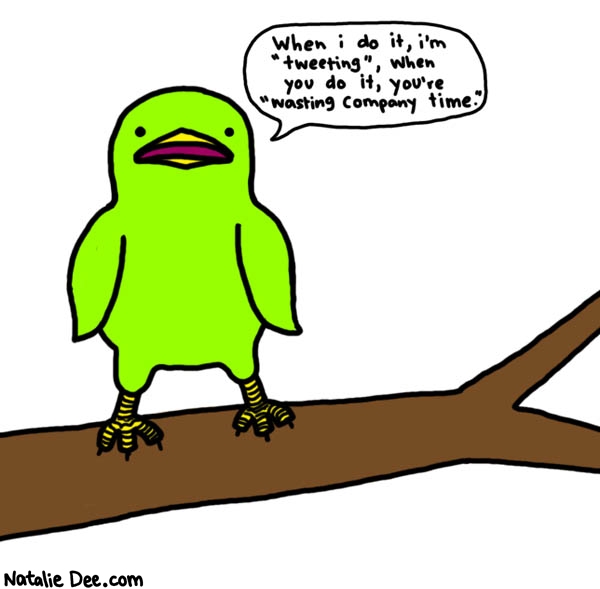 It is partly out of self-interest that I write a response to Bill Keller’s NYTimes Op-Ed, “The Twitter Trap“; I am a Social Media Director.
It is partly out of self-interest that I write a response to Bill Keller’s NYTimes Op-Ed, “The Twitter Trap“; I am a Social Media Director.
But more than that, I think Bill’s a smart guy who deeply misunderstands something, and as a significant part of my professional life was spent as a teacher, I want to offer a lesson. He makes two mistakes in his estimation of Twitter (and, by extension, all other social media). But the upshot is, there is no Twitter Trap (and if there were, it would be called a “Twap,” as I’m sure you could surmise).
The first mistake is that Bill is looking to twitter to do something that it was not intended for, nor designed to accommodate: thoughtful dialogue. The second is that he conflates Twitter, which is an information network with a social layer, with Facebook, which is a social network, with books, which are not social at all. Let’s take these issues one at a time.
1. Twitter is an information network with a social layer.
To look at Twitter and lament its impact on our ability to develop deep thoughts or express insights is to look at the back of a cereal box and lament the state of graphic novels. The medium was never intended for that purpose. In a presentation I give, “How and When to Use Social Media,” I talk about the strengths and weaknesses of different social media: microblogs (like Twitter), blogs, social networks and ideation platforms. We can’t do the same things in all of them. And Bill’s article expresses frustration that he doesn’t succeed when he tries.
Twitter, as an example, is an excellent way to find and disseminate information: things like links, quick opinions, quotes, play-by-plays of events as they happen. Twitter is fast, real-time, easy to consume and move away from.
It’s an excellent gauge of instant mass opinion, as well. Follow the hashtags #bibispeech #mespeech or #tcot and you’ll get an accurate (if polarized) read on how people are reacting to their leaders’ pronouncements on topics that matter to them.
2. Different social media fulfill different functions.
This is a story I’ve been telling for about a year, and is true: my mother is not on Facebook (in fact, she barely ever uses email), while my mother-in-law organized her 40th high school reunion almost exclusively through Facebook. She knows the site and its features probably better than I do. I talk to each of them a couple of times each week.
Conversations with my mother start with “What’s new with you, honey?” conversations with my mother-in-law start with “I saw the pictures of your children at the Arboretum, did you ever get the grass stains out of thier pants?!” Facebook does not replace a phone call–just as a phone call does not replace a visit–but it does enhance the phone call. I establish a connection with my mother-in-law more quickly than with my mother over the phone because I’ve got an asynchronous means of “talking to” my mother-in-law.
Now, I’ve set up my social media strategy such that Twitter is primarily a professional channel and Facebook is exclusively personal. I use Twitter at conferences and I tweet about articles that I’m mentioned in, but I rarely put that stuff on Facebook. Twitter is about sharing information, Facebook is about enhancing my real-world connections.
Neither of these, however, is about developing deep thoughts, or expressing insights. That’s what blogs and Web sites are for. I won’t belabor the point (for fear either of tl;dr or worse) but suffice to say you can’t boil Seymour Hersh down to a tweet and you shouldn’t try. That’s why we have the New Yorker, after all.
Again, I’d recommend taking a gander at my presentation (especially slides 11-14); I’ve embedded it below for convenience.
If any of you know that Bill’s among your Twitter Followers, feel free to DM him this article; I’d love to know what he (or any of you, my fellow GovLoopers!) thinks.




This is the best explanation I’ve seen on Twitter. Thank you for the clarification. I’m somewhere between your mom and your mom-in-law in my use of social media, and this post helped me understand. Now can you provide a lesson in how to read a tweet? Looks like a bunch of symbols with no content! I’d love to see your presentation, but the federal agency I work for will not allow download of the software necessary to access it.
Great. I liked Keller’s column and am sympathetic to the point he’s making, but I think where he gets it wrong is in the conclusion that social media displace person-to-person interaction. Actually, they create a means for interacting with people you might never be able to otherwise (and by that I mean journalists, mostly).
Barbara, I can email you the presentation if you’d like. Just send me the best address!